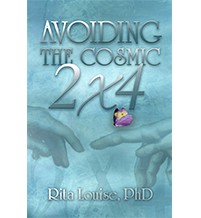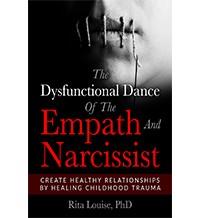The Biology Of The Stress Response Activates Whenever We Are Threatened
When our nervous system detects a threat or we are faced with a distressing situation, our bodies naturally and instinctively reacts by activating our stress response. These threats trigger the body to engage defensively where it sets off a series of rapid well-orchestrated physiological and hormonal changes. They spring into action and allow us to respond quickly in an effort to ensure our survival. All of this happens instantaneously and outside of our conscious control.
Within milliseconds of a frightening experience, our amygdale, an almond-shaped structure in the brain, triggers our body’s survival circuitry. The amygdale is best known for its role in fear processing. It sends a distress signal to the hypothalamus which activates our autonomic nervous system.
Our autonomic nervous system is made up of two parts: the sympathetic nervous system and the parasympathetic nervous system. The sympathetic nervous system is associated with our fight or flight responses. The parasympathetic nervous system works to counter the sympathetic nervous system where it promotes relaxation and regeneration. These two opposing actions are designed to work together to promote healthy cycles of alertness and restfulness.
The Biology Of The Stress Response: The Sympathetic Nervous System
The activation of sympathetic nervous system is tied to our fight or flight stress response. We draw upon the sympathetic nervous system to mobilize us into a self-protection stance. When activated, the sympathetic nervous system allow for the release of the neurotransmitters adrenaline (epinephrine) and noradrenaline (norepinephrine) into the body. These hormones help prepare us for the physical demands of fighting and doing battle with the enemy or running away from it.
The activation of our sympathetic nervous system causes our heart rate to speed up and our blood pressure to increase. Our muscles tense, our veins constrict and our pupils dilate. Our blood sugar may shoot up while our digestive and immune systems shut down. We may begin to breathe deeper, perspire, feel shaky, anxious, or panicky during these stress-filled moments.
If fighting or running fails to gain safety, we will naturally go to plan B where we engage our parasympathetic nervous system. It assumes control if our unconscious mind believes there was no way to escape a traumatic situation.
The Biology Of The Stress Response: The Parasympathetic Nervous System
Our parasympathetic nervous system acts like a break. It works in an inverse way to the sympathetic nervous system. It helps our bodies return to normal once a threat has passed. Its job is to relax us and slow down a triggered response once the threat is gone. This helps calm the body and mind down.
The parasympathetic nervous system is not only associated with regenerative functions. If we are unsuccessful in re-establishing safety through fight or flight, we will default to the evolutionarily oldest part of the nerve system, the dorsal vagal complex. Here, the parasympathetic nervous system engages immobilizing defensive strategies which when activated causes us to freeze right it our tracks.
How The Parasympathetic Nervous System Works
The body, when triggered, instead of releasing adrenaline to power our fight or flight stress response, releases opioids to protect us from physical and/or emotional pain. Opioids are the brains natural pain relievers similar to taking morphine or heroin. Our heart rates and breathing slow down. We might find ourselves holding our breath. We might feel cold, shut down or numb to what is going on around us.
Our eyes may look fixed and we may appear spaced out. We might find ourselves fatigued, dizzy or depressed. We may have difficulty getting words out or feel constriction around our throat. Our body posture may collapse or we may find ourselves wanting to curl up in a ball. Thinking can become incredibly difficult as blood is diverted from the brain. This mental shutdown also allows us to dissociate from challenging experience.
The Hierarchy Of The Fight, Flight, Freeze Fawn Stress Response
There is a hierarchy when talking about the biology of the stress response. Our first automatic response to a danger is to fight to gain safety. If you can fight your way out of a situation, great! If the threat is too big or you quickly assess fighting is not possible then the brain automatically shifts to our flight option where we attempt to flee the scene.
In fight or flight response activation, our bodies releases adrenaline to support our victory or to quickly withdraw. A child being abused by an adult may try to fight or flee. They may achieve this or they may fail. There is an underlying deep seated hope whenever these two responses are employed that they will get out of the situation safely.
The freeze or fawn response kicks in when we find ourselves trapped in a dangerous situation with no apparent means of escape. With these two options, we relinquished all hope of fighting off an attacker or fleeing from the danger. As a result we may find ourselves froze and unable to think, dissociate or end up relinquishing ourselves in order to feel safe.
Taking action is the key to making positive changes in your life. This includes your health. So don’t wait! Take your next step right now and contact Dr. Rita to schedule a private consultation.
Medical Intuitive Reading – Intuitive Counseling – Energy Healing
© Copyright Rita Louise, Inc. – soulhealer.com. All rights reserved.




